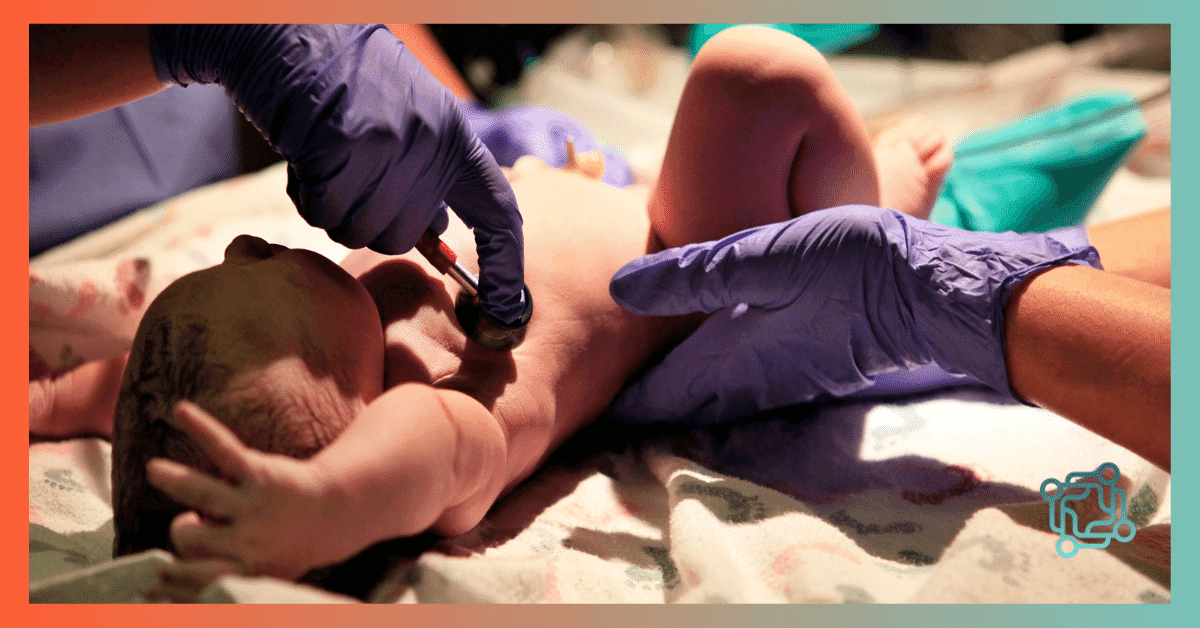
COMMON TYPES OF BIRTH INJURIES
Nurturing Hope, Fighting for Birth Injury Justice in Throughout the U.S.

Unfortunately, complications can occur when a woman gives birth. Depending on the circumstances, when this happens, the newborn baby can be left with birth injuries that may be relatively mild or severe. Birth injuries can result in disfigurement or disabilities that can last throughout the child’s lifetime. It’s important to understand how these injuries can develop and what legal steps you can take if your baby has suffered birth injuries.
What is a Birth Injury?
A birth injury is a type of injury that results from trauma either before, during or immediately after the birth of a baby. Some cases are more severe than others and can even be life-threatening. Other birth injuries, on the other hand, can be mild and require little care. In some cases, birth injuries can heal on their own and the baby can live with very few issues. Severe birth injuries may require continuous treatment throughout the child’s life due to their long-term consequences.
It’s important to understand that birth injuries are not defects. They do not develop due to a genetic predisposition but rather, as a result of a problem caused by medical negligence.
Types of Birth Injuries
There are a number of different birth injuries that a baby can suffer during labor, during birth or immediately after childbirth. In many cases, a birth injury directly affects the brain due to the baby being deprived of oxygen. These injuries include the following:
- Anoxia: This brain injury results from a severe case of hypoxia. It usually comes from strangulation, which can happen when the umbilical cord gets tightly wrapped around the baby’s throat.
- Hypoxia: This birth injury occurs when the baby is deprived of sufficient oxygen.
- Birth asphyxia: This type of birth injury results from a lack of oxygen to the baby’s brain during childbirth.
- Hypoxic-Ischemic Encephalopathy (HIE): Hypoxic (lack of oxygen), Ischemic (lack of blood supply), Encephalopathy (brain dysfunction) is a condition caused by a chronic or sudden loss of blood supply and oxygen to the brain. Hypoxic events can severely affect the fetus during labor and delivery. Fetal monitoring is one tool that can be used to identify when a baby is not getting enough oxygen and blood flow in labor and delivery. HIE can lead to cerebral palsy. Because of this, careful monitoring of the fetus during labor and delivery is essential. If the signs of hypoxia are not correctly and timely identified and treated, the baby may incur HIE brain damage.
- Cerebral Palsy or CP: Cerebral palsy is a disorder that affects body movement and posture and is caused by brain damage that occurs either before, during, or immediately after birth. CP can be caused by genetic or environmental factors, as well as prematurity. However, because hypoxia or lack of oxygen to the baby’s brain during labor and delivery is a known cause of cerebral palsy, it is important for the doctors and nurses to identify the signs on the fetal monitor and timely intervene to help the baby. The type and timing of the injury to the brain determine the severity of cerebral palsy. Some children are mildly affected while others may be completely unable to move and require assistance to eat and even breathe.
- Periventricular Leukomalacia (PVL): Periventricular leukomalacia is an injury to the white matter of the brain. The white matter of the brain carries information from the brain to the muscles of the body. PVL is an injury that occurs more often in premature babies, as their brains are not completely developed and as such are more susceptible to being injured. PVL can lead to seizures, developmental delays, vision and hearing difficulties, and cerebral palsy in the newborn.
Other types of birth injuries involve damage to the baby’s head, tissues or other areas or organs and include the following:
- Brachial palsy: This is a medical condition that affects the baby’s shoulder. The nerves of the arm and shoulder can be injured during birth when the baby’s shoulder is stuck during delivery, known as shoulder dystocia. This can result in an inability to flex or rotate the arm. In a mild form of this injury, normal range of motion returns after several months, but if the injury is severe, it can be permanent.
- Bruising: Bruising can show on the head or face when the baby’s birth involves the use of forceps. This injury can either be temporary or permanent. A baby can also have a laceration or bruise on the head when vacuum extraction is used during delivery.
- Caput succedaneum: This birth injury occurs when the soft tissues of the scalp swell during childbirth. In some cases, the swelling goes down after a few days. This is usually a temporary injury caused by vacuum extraction.
- Cephalohematoma: This injury occurs when bleeding ensues under the bones in the baby’s head. It can resolve itself in a few weeks to months, but some babies develop jaundice.
- Facial paralysis: Pressure on the baby’s face during childbirth can result in facial paralysis when a nerve is injured. This usually occurs when forceps are used. If the nerve is only bruised, the paralysis can resolve after a few weeks, but if it is torn, surgery may be required.
- Subconjunctival hemorrhage: During a difficult delivery, a baby can suffer this type of injury, which involves the breakdown of small blood vessels in the eyes and manifest with redness in the whites of the eyes. This is usually a temporary issue and doesn’t cause eye damage.
Long-Term Effects of Birth Injuries
In some cases, a birth injury can result in long-term effects on the baby that stay with them throughout their lifetime. For example, in a severe case of brain injury sustained during prolonged labor or delivery, the child can have developmental and cognitive disabilities that are permanent. Equipment and special medical care may be necessary as well, which can leave the parents with costly expenses for many years.
If your baby suffered from a birth injury and you want to file a claim, consider speaking with a nationwide* birth injury attorney at the Law Firm of Michael H. Bereston. A nationwide birth injury attorney will give you helpful advice on how to proceed with your case.
Contact the our firm at (410) 220-6581 at your earliest convenience to schedule your free case evaluation and begin healing.
*In jurisdictions outside Maryland and Washington DC, Mr. Bereston, pursuant to Court approval, will prosecute the case.

Our goal in each case we handle is to obtain the maximum compensation for our clients, which is why we only take on a limited number of cases each year.